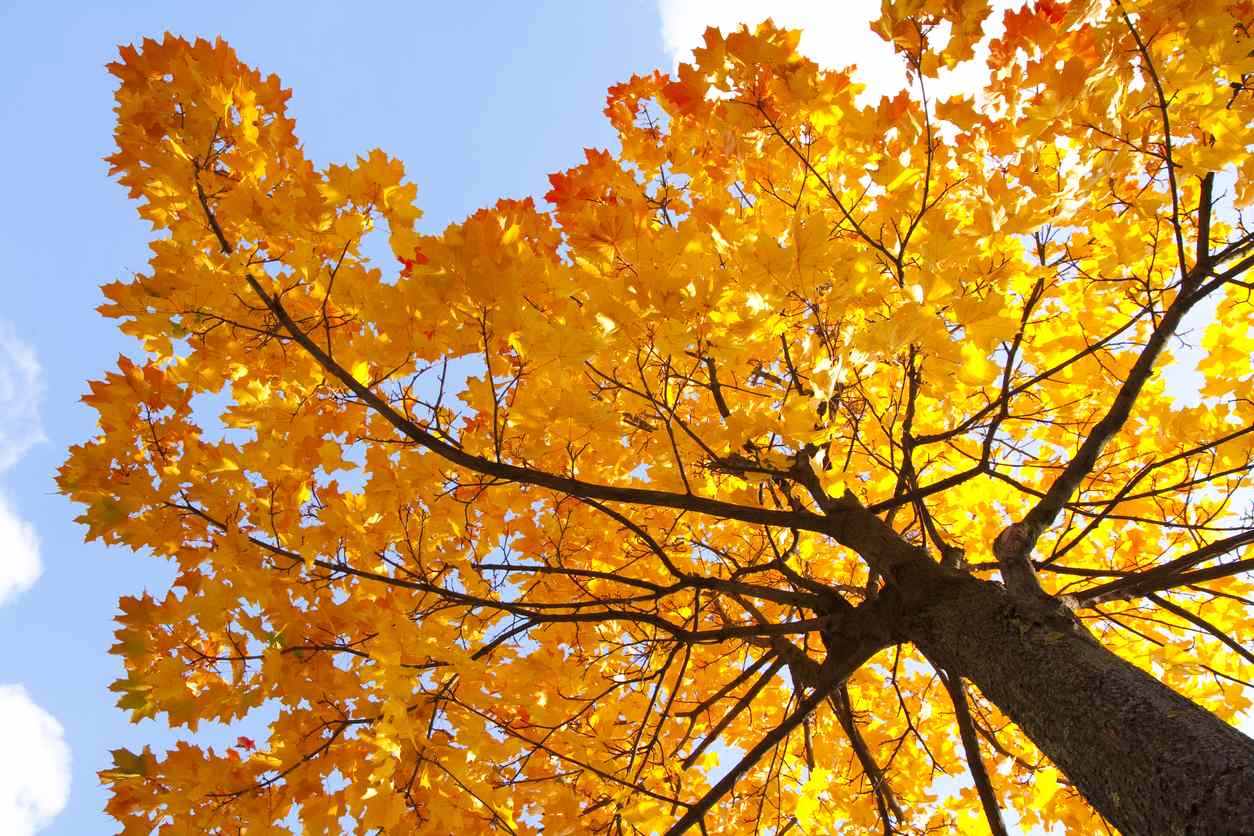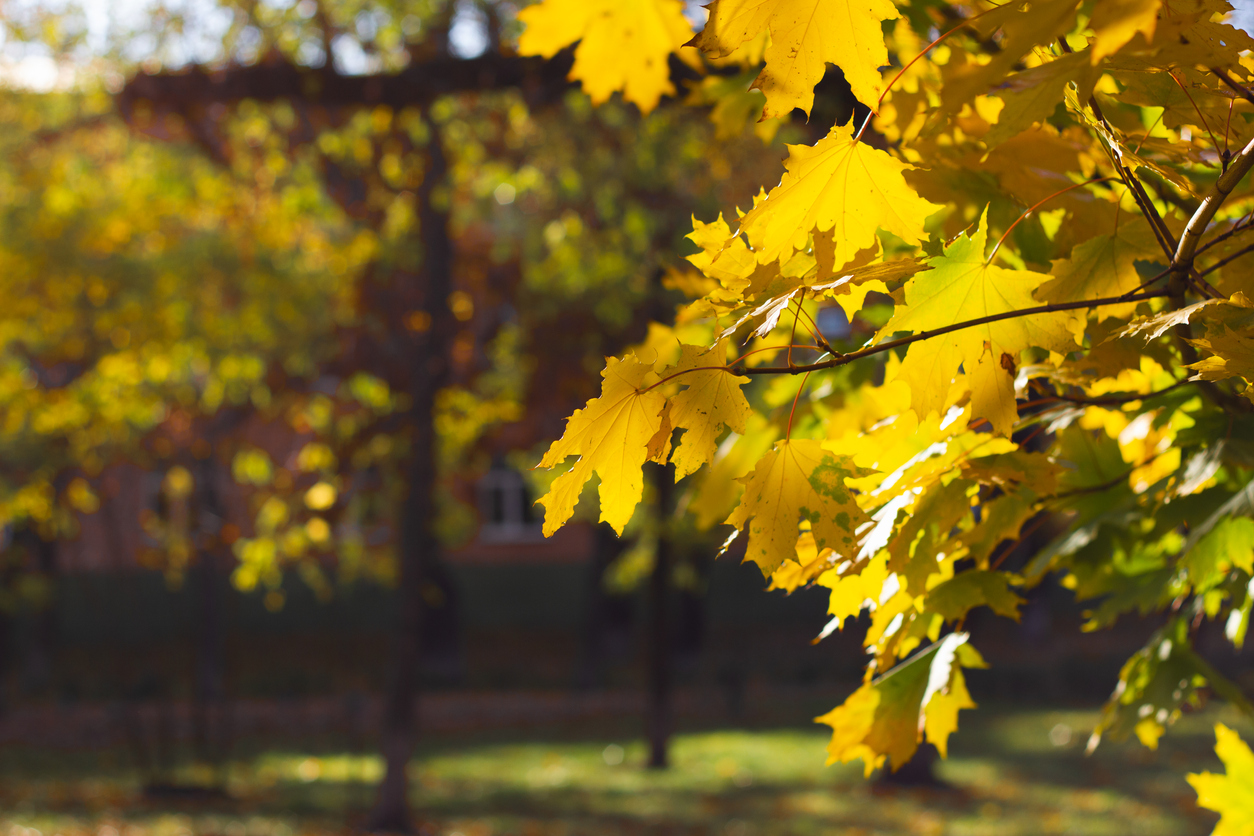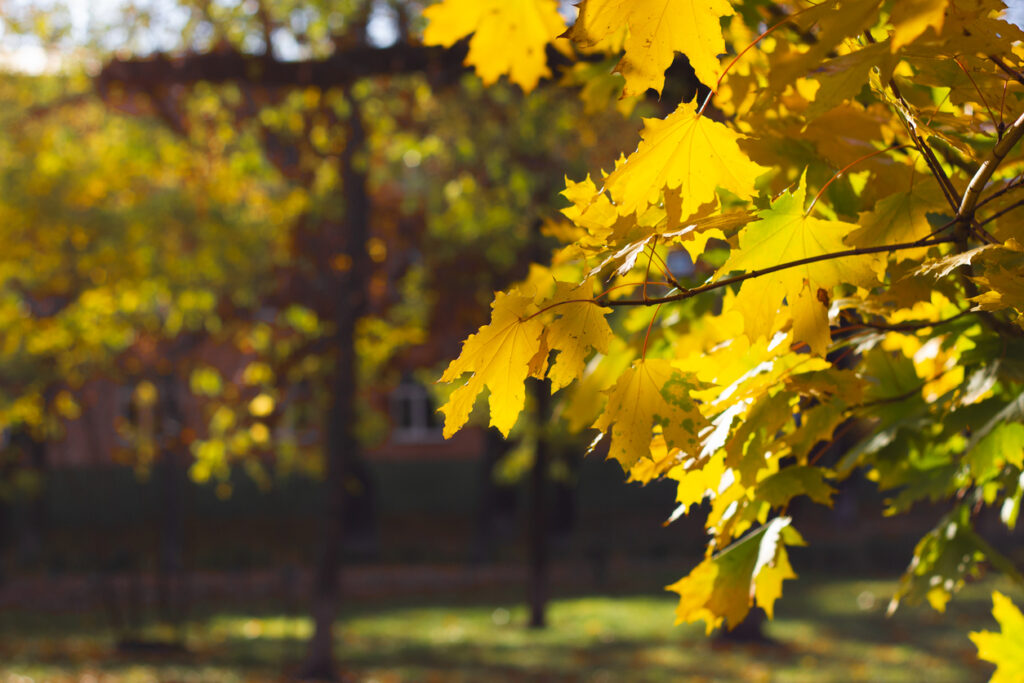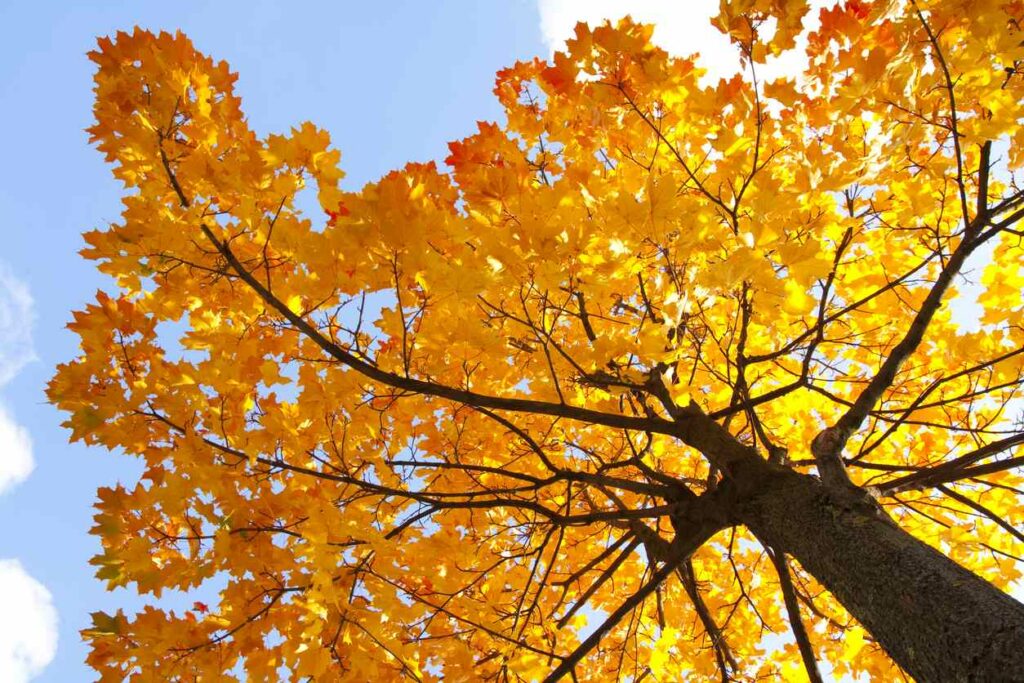Maple Trees – How To Grow And Care For Maple Trees
Put simply, maple trees make the ultimate fall statement. I think it’s safe to say that maple trees are some of the most common sightings in any urban and suburban neighborhood. No backyard, lawn, or garden is complete without the stately maple. The tree has so much personality, it fits right into any outdoor landscape you plan for, or around, it. Does it tie the garden together? Absolutely!
So if you happen to feel that your yard or garden is missing something, chances are you don’t have a maple tree swaying cheerfully with the summer breeze and reflecting the many shades of an orange sunset. Lucky for you and every homeowner, maple trees are as low maintenance as they come. Read on to learn how to choose the right maple variety and plant it in your garden or backyard.
All about Maple Trees
Forget about maple syrup. The common maple (Acer) has a lot more to offer than just a sugary liquid to make your waffle more palatable. This deciduous tree grows to about 30 feet on average although some varieties reach 100 feet with ease and grace. It is so ubiquitous in the American landscape, few people take notice of it or even talk about it. But we’re here to remedy that situation and tell you all about this amazing fixture of American life.
Famous for its longevity, the average maple tree lives between 100 to 300 years. The more favorable the weather and soil conditions, the longer the tree lives. It has USDA hardiness zones between 3 and 8. So it favors moderate to temperate weather conditions. The tree thrives in full sun although it can tolerate partial shade.
The main reason many people grow the maple is as a shade tree. But come the fall and the vase-shaped crown displays a side of the tree that has become legendary. The leaves acquire a fiery color that varies between red, orange, yellow, and brown shades. Overnight, your lawn or garden becomes the focal point of the whole neighborhood.
That said, the shallow roots of the maple are of the invasive type. They would easily break sidewalks and mangle your underground pipes if they get a chance. So always pick a spot away from fences, sidewalks, and walls to plant the giant maple tree.
Maple Tree Varieties
If you’re only familiar with the Red Maple, it might come as a surprise to you that maples have in fact over 150 species. Not all of those species are suitable for your particular area or landscaping designs. So we narrowed them down to those six varieties.
- Amur Maple: A native of Korea and Mongolia, this tree has USDA hardiness zones between 3 and 8. Its fall colors are either red or yellowish-red. It grows to about 30 feet and requires full sun. The mature tree has drought resistance.
- Red Maple: The most popular of all the maples. Starting as a red seed, even the young twigs are also red. But it’s in the fall that the leaves display a splash of red or burgundy that takes your breath away. It can reach 100 feet in the right conditions and has an oval or rounded crown. It is native to the US and Canada and its three-lobed distinct leaf adorns the Canadian flag.
- Sugar Maple: If you want to grow a maple to make sweet syrup, this is the variety for you. The sap of this tree has high concentrations of sugar and is packed with flavors. However, this tree is quite picky in the type of soil and environmental conditions around it. It doesn’t tolerate pollution and heavy soil although it can grow well in partial shade. It grows to 80 feet and its five-lobed leaves turn yellowish-orange in the fall.
- Japanese Maple: This maple has both character and compact size to make it the right candidate for your garden. If you’re into bonsai trees, you couldn’t find a better maple to add a dramatic effect to your interior design. The mature tree grows to about 25 feet outdoors but it has a low tolerance to harsh weather conditions. Cold weather could stunt its growth while the hot sun might scorch the leaves.
- Paperbark Maple: Say what you like about this maple, it sure knows how to get your attention. If it’s not the colorful three-lobed leaves, then it’s the peeling cinnamon bark. Even young trees will shed off their bark every winter. It barely grows an inch over 30 feet and is suitable for small backyards and gardens with limited space.
- Silver Maple: A native of the USA and Canada, the underside of the leaves is silver and shimmers in the wind. The tree has invasive shallow roots and you’d want to keep it away from pipes, paved roads, or driveways. It has a fast growth rate and easily reaches 100 feet. The tree needs full sun and doesn’t tolerate shade.
How to Grow Maple Trees
The best way to grow maple trees no matter the variety is from seeds. This gives you full control over the qualities of the tree as well as the time of planting. There are many ways to go about starting the maple from seed. You could either use cold stratification or let the seed germinate in the soil. Or you could use a combination of cold and warm stratification. Here we’ll discuss cold stratification since it applies to most maple species.
- This method works well for maples that drop their seeds in the fall or winter. It has a higher germination rate than other methods. For trees whose seeds develop in the spring, you can germinate them in the soil.
- Start your seeds between 3 to 4 months before the last frost. It takes that long for the seeds to germinate.
- Put your maple seeds in a zip-lock bag along with a neutral growing material such as vermiculite. Don’t use peat moss since it is too acidic for some maple seeds.
- Sprinkle some water in the bag to get the growing material damp. Don’t drench it or get it wet. Squeeze any extra water out of the bag.
- Sanitize the inside of the bag with a fungicide to prevent mold.
- Press the bag with both hands to expel air and zip it closed.
- Keep the bag in the fridge at a temperature between 33 degrees and 41 degrees Fahrenheit.
- Check on the bag of seeds regularly. If the growing material is dry, add a few drops of water. But if you notice too much water condensed inside the bag, squeeze it out.
- It will take your maple seeds anything between 2 to 4 months to germinate depending on the species.
- Once the seeds start to germinate, you can plant them in a seed tray before you transplant them to their permanent place outdoors.
Maple Tree Care
As we mentioned, maple trees have shallow roots that wreak havoc with buildings, sidewalks, and underground pipes. So pick a spot away from any construction and give those roots ample room to grow and spread out. When your tree is growing successfully, pay attention to watering and pruning since they can make or break most maples.
Soil
Soil type, nutrients, and pH levels are all important factors that contribute to the success of the maple tree in your lawn or garden. If there’s one type of soil the maple doesn’t tolerate it’s compacted soil. So dig up about three feet of soil and mix coarse sand and perlite to improve drainage. Also, make sure the area about 4 feet in diameter around the tree trunk is free from obstacles. That’s how far the strong roots of the maple would go. The pH levels of the soil should be between 4.5 and 6.5. Some maple species tolerate or even thrive in acidic soil, but they cannot grow in alkaline soil.
Watering
Maple trees are thirsty species. On average you have to give your maple around 11 gallons of water every week. The maple isn’t known for its drought tolerance, so if you forget to irrigate it, the tree leaves will quickly curl up and turn brown. That’s a sure sign, your tree is dehydrated and needs watering immediately. Many homeowners like to use a tree watering bag to avoid the complications of getting the water amounts wrong. Aim your watering at the root of the tree. It’s best to water the tree in the early hours of the morning to allow the water to reach the roots before it evaporates. If you worry about the soil drying out too quickly, you can use a thick layer of mulch to improve soil water retention.
Fertilizer
Since maple trees prefer rich soil, you can improve the fertility of your garden with either organic compost or chemical fertilizers. Experts recommend you choose a custom 5-10-10 fertilizer that’s low on nitrogen. Maples are top-heavy trees and with their shallow roots, nitrogen would trigger a foliage growth that puts a lot of strain on the roots. You should apply the fertilizer in the spring and summer. Avoid fertilizing a drought-stressed tree or applying fertilizer in the fall or winter. If you don’t have either chemical fertilizers or organic compost, you could use mycorrhizal fungi instead. They have a symbiotic relationship with the maple and improve the aeration and water retention of the soil without harming the roots of the tree.
Pruning
As far as maple trees go, pruning is as important for the survival of the tree as it is essential for maintaining its looks. You should start pruning the young maple to boost the strength of the branches. The best time to prune it is in the summer when the foliage is fully developed. Keep one leader and remove any side branches to give the tree its distinct shape. Get rid of dead or diseased leaves and branches to maintain the health and beauty of the tree. Avoid pruning in the early spring since it leads to loss of sap. Pruning in the fall is not recommended either since the tree won’t heal properly during dormancy.
Pests and Diseases
The juicy sap and high concentration of sugar in the maple trees make it the target for many pests. You should keep your eye out for aphids, scales, and borers. They feed on the sap and make gaping holes in the leaves. Apart from those bugs, the maple can suffer from any of the following diseases.
- Anthracnose: A fungal infection that causes the leaves to fall in the middle of the summer. Look out for fungal spores and browning of the leaves. Remove infected twigs and leaves to prevent the spread of the disease.
- Verticillium Wilt: Another disease caused by fungus. This time the fungus is in the soil and blocks the cells transporting water and nutrition in the tree. As the leaves turn yellow and fall off, the tree could die if you don’t intervene. Turn up the soil and let it rest in the sun to get rid of the fungus. Also, use nitrogen-low fertilizer to encourage the tree to grow again.
- Tar Spot: This fungal infection leaves dark spots on the leaves. It doesn’t pose a threat to the tree itself. Get rid of the infected leaves and dispose of them safely.



